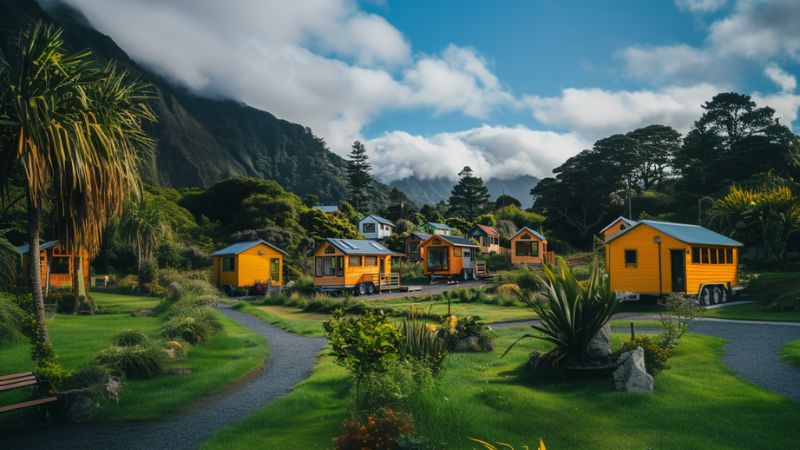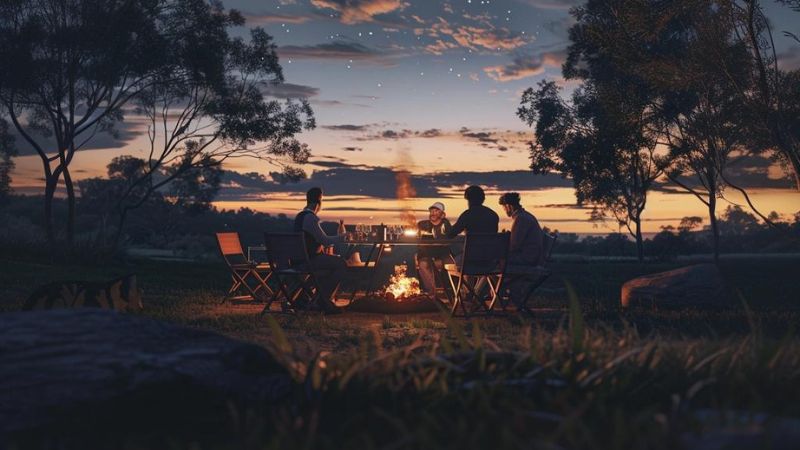Under a wide expanse of sky where stars used to light up the simple joys of a bonfire, a tiny house community once thrived, fueled by ideals of sustainability, simplicity, and shared values.
It began with a festive gathering, a Christmas dinner hosted on a humble plot of land lent by a couple who dared to dream alongside three hopeful individuals. The idea was simple: create a space where freedom, community, and a minimalist lifestyle form the cornerstone of every day. Our anonymous source, a resident since April 2018, recalls, "It was like stepping into a new world, a canvas we could paint with our collective hopes."
In the early days, the community blossomed. "Everyone was keen to contribute, to build not just their tiny houses but a community spirit," the resident shares. People assisted each other in constructing their homes, shared meals, and knowledge freely. "It was a true community in every sense, where each success was celebrated, and every hardship was a collective challenge." The intimacy of their living arrangement fostered not only close relationships but a sense of belonging and purpose.
However, as more people joined, the fabric of unity began to unravel. Disagreements over community rules, social events, and personal boundaries introduced tension. "We faced our first major conflict when a couple started throwing loud parties. It split the community, some enjoyed the liveliness, others found it unbearable," explains the resident. This division was the first crack in the community's idyll, exacerbating underlying issues of governance and conflict resolution.
The community's management struggled to handle these growing pains. "Our landowner, once an active mediator, became increasingly hands-off. Problems were met with temporary fixes rather than long-term solutions," the resident notes. The lack of effective leadership led to a decline in communal activities and support systems. What once was a vibrant communal life slowly turned into isolated coexistence. "It shifted from a community to just a group of people living near each other. The bonds of friendship and cooperation grew thinner," they add.
Today, the tiny house community bears little resemblance to its founding ideals. "It's more like a neighbourhood now. People nod, smile, but a lot of the deep connections are gone," says the resident. Incidents of conflict have led to a culture of avoidance and passive aggressiveness. The community messenger chat is rarely used for genuine requests for help; offers are begrudging, if made at all.
Looking back, the resident reflects on critical lessons for those considering a similar lifestyle:
Effective Leadership is Crucial: Leaders must be proactive and involved, with a clear system for addressing issues.
Solid Foundations of Governance: Rules should be clear, agreed upon by all, and, most importantly, enforced.
Fostering Community Spirit: Regular meetings and shared activities help maintain the bond among members.
Preparedness for Growth: Communities must plan for expansion and the challenges it brings.
"Our tiny house community started as a dream of what could be, a beacon of alternative living. But it also taught us that good intentions need robust support structures," concludes the resident. They plan to leave, seeking peace on their own land, away from the community that once promised a utopia. "Tiny living isn't just about the size of your house but the strength of your community. Without that, it's just living small," they muse, a note of wistfulness in their voice.
This tale of a tiny house community serves as both an inspiration and a cautionary tale, highlighting that the sustainability of such an endeavour relies heavily on the community's interpersonal and structural resilience. As the resident prepares to depart, they leave behind lessons that might one day help rebuild the dream they once shared.



